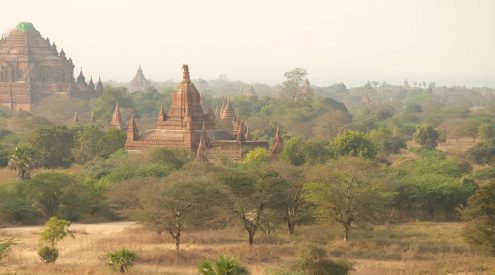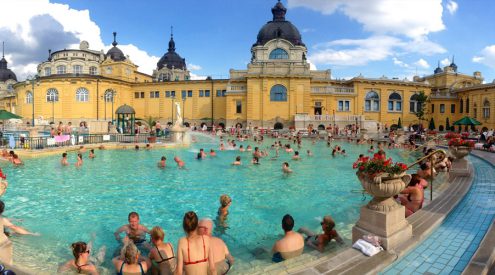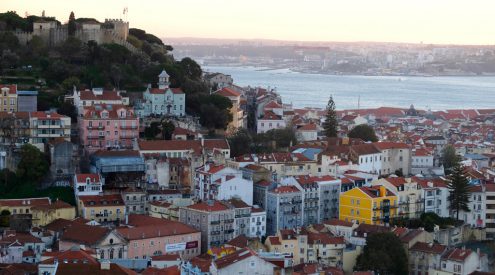Tourist brochures proudly proclaim Kerala as ‘God’s own country’ and I’m not one to quibble with them. From the moment that we landed at Cochin (Kochi) airport, after flying from Jaipur via Mumbai, I felt more chilled out than I had been anywhere in India. Kerala is like a different country to Rajasthan – it’s hot and humid (we’d left Rajasthan in the middle of winter), full of coconut trees, and the people are entirely different to the Hindi-speakers of the north.
On a day’s sightseeing in Cochin, we took in gloriously faded Catholic churches, the famous Chinese fishing nets, an incomprehensible Kathakali (a Keralan traditional dance) performance, a promenade along the seafront, delicious Keralan fish curry, the oldest synagogue in the Commonwealth, and ‘Jew Street’,
While I loved Cochin, and everything we saw and did in our one jam-packed day there, my favourite Cochin experience was where we stayed. After a full day’s travel from Ranthambhore, we arrived in Cochin in the evening, feeling grubby and airport-weary. It was magical to arrive at Chitoor Kottaram, at the end of a network of labyrinthine narrow streets. We walked through a door in the wall and to our surprise, discovered that we were staying in an actual palace, on the edge of a river in the middle of the city. The palace is only available to one couple or a family – so we were staying there on our own! With flickering lamps lit in the garden and around the edge of the dark teak palace, the effect was magical. Our bedroom – an entire floor of the palace – was utterly romantic, with flowing mosquito net, a swinging day bed and shutters opening onto both sides of the garden.
The food at Chitoor was fantastic. Anna, the cook, made us at least three courses for each meal. It was our first taste of Keralan home cooking and we loved it. Our favourites were the thalis with coconut curries and sweet pickles, pancakes stuffed with cardamom, banana and coconut, pangappam (a sweet breakfast cake made with rice flour and coconut water), palada (sweet rice pudding with ghee, sugar and chopped fried rice chapatis) and idlis (steamed rice pancakes) served with curry for breakfast.
A short hour’s drive from Cochin, Phillipkutty’s farm is in Kerala’s famed backwaters – a tranquil coconut farm on an island reached by canoe. Run by Anu Mathews and her mother-in-law, whom everyone calls Mummy, it’s a proper homestay with comfortable, private bungalows along the water and a homely family vibe. You can borrow bikes to ride around the village on the mainland, take a sunset cruise, go birdwatching, take cooking classes with Mummy, or just chill in a hammock and relax. Meals are in the family’s home, with all the guests sitting around the table sharing dishes and stories.
After only a night at Phillipkutty’s (could have easily spent a week there), we were picked up in a traditional Keralan thatched houseboat for a cruise around the backwaters. This is a typical highlight of the Keralan tourist itinerary and it’s not hard to see why: you spend the day lying around the boat, suntanning, reading and looking out at the gently-changing views of emerald-green rice paddies, women washing brightly-coloured sarongs, children playing next to the water and swaying palm trees. The cook onboard whipped up incredible meals from the tiny kitchen, cooking enough food for 20 (there were just the two of us on the boat). We feasted on grilled fish, chilli prawns, poppadums, a variety of coconut chutneys, spicy seafood curries and fried bananas for a teatime snack.
Feeling even more chilled out, we moored on the mainland after one night on the boat (two nights would have left us comatose), and headed to our next stop a short drive away. Not usually the resorty type, I really enjoyed three days spent at Marari Beach, on a bit of unspoilt southern Keralan coastline fringed with coconut palms. The resort is spread across around 20 acres so even though there were over 100 people staying there at the time, you only really see them at the buffet. We spent our time going to early-morning yoga classes with the entertaining Gopal, who’s almost 70 and more flexible than a really bendy rubber band, having Ayurvedic treatments done (where I experienced my first bum massage – all I have to say about that is things were lifted and separated), lying on hammocks under swaying palm trees, swimming in the warm Arabian Sea and less warm pool, eating far too much (my highlight of the buffet was banana pickle), doing organic Keralan cooking classes, drinking fragrant masala chai from the chai wallah who appeared with his cart every afternoon at 4pm on the dot, cycling around the village outside the resort, and doing meditation classes in the late afternoon to the sound of the ocean and squabbling crows.
A nearby temple was celebrating an annual festival of elephants, so one afternoon we roused ourselves from hammocks and took an autorickshaw to photograph gaudily-decorated ellies jangling with bangles and bells. These sorts of festivals seem to happen all the time in every small town or village in India – there are too many of them to put in a guidebook. Wherever you are in India, you’re likely to stumble upon some colourful, noisy religious celebration and most likely be the only tourists there. This turned out to be one of my favourite things about India.
Just when we were getting a bit too relaxed, we left Marari for Thekkady, driving the motion-sickness inducing windy roads through the Western Ghat mountains past tea and spice plantations smelling of cardamom, and arrived at Spice Village, on the edge of Tamil Nadu just before we threw up in the car. Things improved from there on, with a scratch ‘n sniff tour of a spice plantation, picking and smelling cardamom seeds, black pepper, all spice, nutmeg, cinnamon, and a trip around a tea plantation and factory (which smells deliciously like a pot of freshly brewed tea).
After not seeing tigers in Ranthambhore, we weren’t hopeful about spotting them in Periyar, where tiger-sightings are extremely rare. Tiger elusiveness aside, we had an amazing three-hour trek through the forests of Periyar, on the edge of Thekkady, and we did end up seeing rather a lot: rare mouse deer, wild dog, barking deer, sambar deer, greater racket-tailed drongo, and the Malabar giant squirrel, which was pretty giant. Next time I’m in Periyar, I definitely want to go for the sleeping in the forest option – you can spend a night in a hut in the forest, and have more chance of spotting leopard and tiger.
Kerala lived up to the brochure-speak of ‘God’s own country’. I loved the friendly, chilled-out people, the beautiful-sounding language (Malayalam), the lotus-shaped squiggles of the alphabet, the coconut palms, the seafood curries, coconut chutney, banana pickle, coconut water, the rice paddies, the sticky humidity (it reminded me of summer school holidays in Durban), the smell of cardamom wafting in the air in Thekkady, idli, and the best chai in India.
Our next state was Tamil Nadu, the border of which was few metres away from Thekkady, for the last part of our trip.
Where to stay in Kerala
Chitoor Kottaram was definitely one of the highlights of the whole trip. Still owned by the royal family of Cochin, the palace can sleep six people in an exclusive group. It’s a romantic haven in the middle of the city with fantastic hands-on staff and really amazing food. If I was on honeymoon in India, this is where I’d come.
Phillipkutty’s Farm is an idyllic family homestay in the backwaters of Kerala. If you want the chance to stay with a family during your trip to India this is a great option. The water-facing villas are lovely, and the home-cooked food is fantastic. I loved waking up at dawn and sitting out on our veranda watching boats filled with coconuts float gently past in the rising pink mist, and walking around the coconut farm, discovering cocoa plants and nutmeg trees.
A cruise around Kerala’s backwaters is awesome. We went with Spice Cruises and had a great time. We had a crew of three on our boat, which just had one ensuite bedroom, so it was a pretty private experience. The freshly-cooked food was great, and the crew was really friendly.
Marari Beach is a huge 62-room beach resort with all the resorty stuff you could want: buffets, multiple restaurants, a big swimming pool, Ayurvedic centre, bicycles to borrow, activities such as butterfly walks, and yoga classes. If you’re travelling with kids, or just want to chill out for a few days without having to think about organising anything, then this is the spot.
Spice Village in Thekkady is a small eco-friendly resort with comfortable bungalows set apart from each other in a fragrant garden. I loved the 50-mile restaurant which only serves food sourced in a 50-mile radius, and the real commitment to sustainable energy (they were building a huge solar power section when we were there). The resident naturalists are passionate about conservation in the area – we enjoyed their evening slideshows.
Tim Durham from Colours of India organised my five-week trip to India and I really recommend him and the local agents he uses. You can contact Tim on tel 021-813-9778, email [email protected] or www.colours-of-india.co.za.
Read my blog about travels in Rajasthan (and why Rajasthani moustaches rock)
Read my blog about Delhi and Agra (and why the Taj Mahal is not disappointing)

















